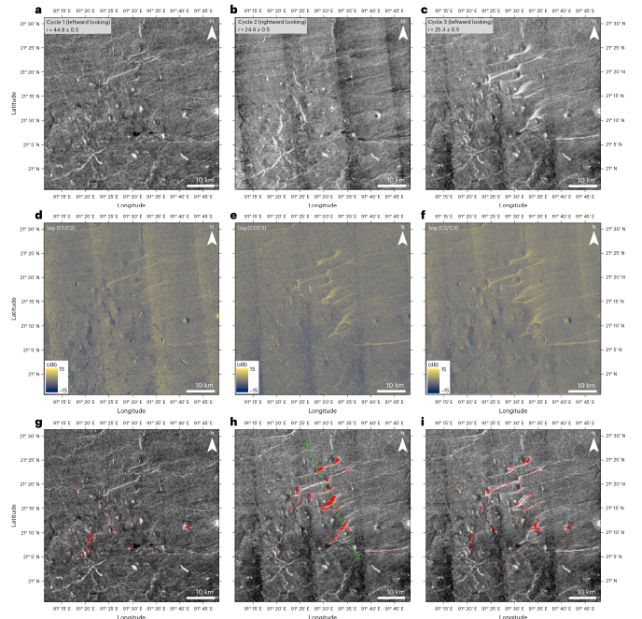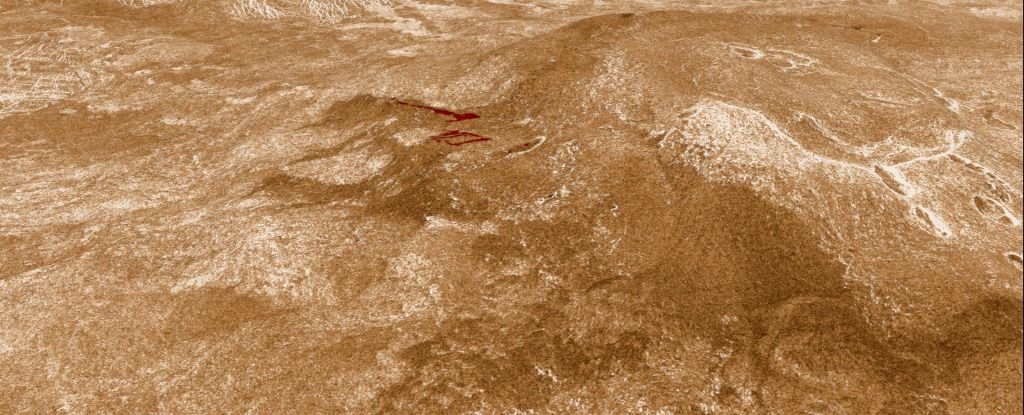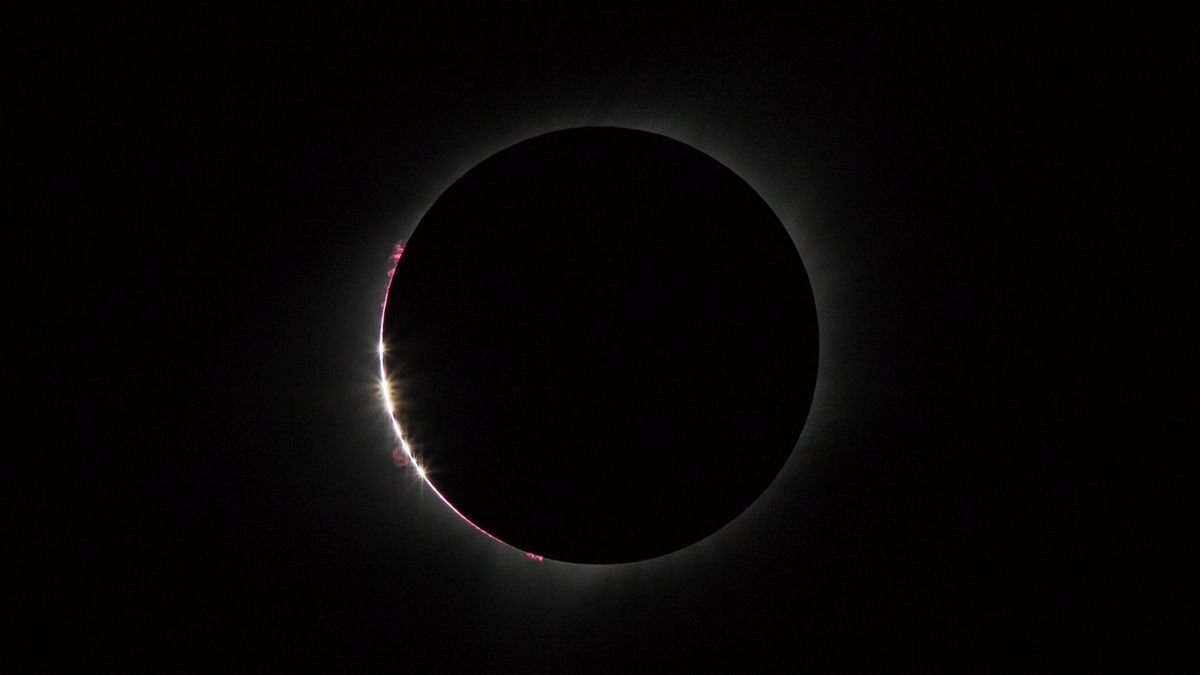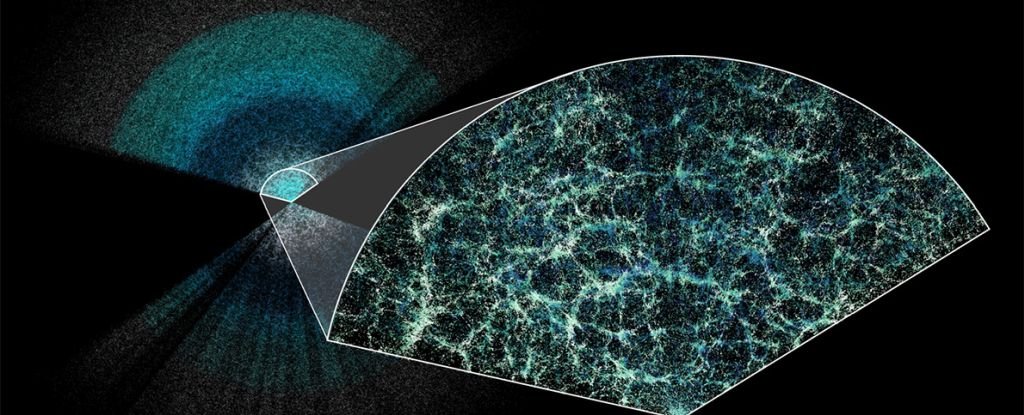Magma might be roiling and bubbling just underneath the surface of Venus, even as you read these words – and possibly breaking through.
A new analysis of data collected over the space of just eight months in the early 1990s by the Magellan orbiter shows changes in the Venusian surface that can best be attributed to volcanism that took place during the Magellan mission, astronomers have determined.
It’s the latest in a series of similar findings – suggesting that volcanic activity is not only ongoing on Venus, but widespread.
This is an important result. It means that any observations we make of Earth’s neighbor and near-twin need to take into account the way volcanism can shape the Venusian surface and atmosphere – including the detection of phosphine gas, interpreted as a potential biosignature, back in 2020.

The result also has relevance when considering the evolution of Venus.
A team led by geologist Davide Sulcanese of the Università d’Annunzio in Italy has found that Venus has a similar volcanic output to Earth over the past 180 million years, which is not only way higher than anyone expected, but can help scientists understand its history.
The researchers found that the backscatter, or radar reflection signal, changed over time in two different volcanic regions as Magellan flew overhead.
frameborder=”0″ allow=”accelerometer; autoplay; clipboard-write; encrypted-media; gyroscope; picture-in-picture; web-share” referrerpolicy=”strict-origin-when-cross-origin” allowfullscreen>
“We suggest that these changes are most reasonably explained as evidence of new lava flows related to volcanic activities that took place during the Magellan spacecraft’s mapping mission with its synthetic-aperture radar,” the researchers write in their paper.
“This study provides further evidence in support of a currently geologically active Venus.”
Venus, for all its relative proximity to Earth, is not well understood. We know a few things about it – it has similar size, mass, and mineral composition to Earth, but is very different in other ways.
Its surface temperature and pressure are about 30 times and 90 times those of Earth, respectively. And it’s choked by a thick atmosphere of mostly carbon dioxide that rains sulfuric acid on the ground below.
Because of these conditions, Venus is not conducive to exploration in the same way Mars is, and the thick atmosphere makes it very difficult to see what’s happening on the surface.
And there’s one more problem. Precious few dedicated probes have been sent to Venus, meaning that we simply don’t have a lot of data from orbit.
But Magellan was equipped with radar that was able to penetrate the cloud layer and map the surface below, as it orbited Venus from 1990 to 1994.
Thirty years later, it’s still the best information we have – and, just last year, scientists revealed that they’d found new treasure in that trove. Over an eight-month period in 1991, a volcanic vent changed shape: evidence of ongoing volcanic activity.
By studying a wide swath of Magellan data, Sulcanese found more evidence of changes that took place in two different regions between 1990 and 1992.
On the side of a shield volcano called Sif Mons, and a large volcanic lowland called the Niobe Planitia, the way the radar waves reflected off the surface, or backscatter, changed significantly.
The researchers made a detailed analysis of these changes, and ruled out alternative explanations such as atmospheric effects, image artifacts, or a change in the viewing angle. This allowed them to determine that the most likely cause was a reshaping of the surface due to lava flows.

With this information in hand, the researchers then set about calculating the volume of volcanic output. They found that Sif Mons has a flow rate of 25.2 and the Niobe Planitia of 37.8 cubic kilometers per year.
Over the past 180 million years’ Earth’s average volcanic flow rate has been estimated at 26–34 cubic kilometers per year.
This suggests that Venus’ volcanic output might be of the same order of magnitude as that estimated for Earth.
Last year, scientists posited that Venus might experience at least a few volcanic eruptions per year. This new result significantly bolsters those findings. But we won’t know for certain until we go back there and take a good, long, hard look at Venus.
“In our analysis, we have identified compelling indications of lava flows related to ongoing volcanism in two distinct regions of Venus,” the researchers write. “These findings underscore the importance of continued exploration of Venus.”
Luckily, there are missions in development to do just that.
The team’s research has been published in Nature Astronomy.










